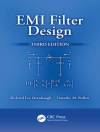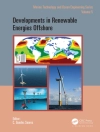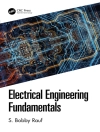HVDC is a critical solution to several major problems encountered
when trying to maintain systemic links and quality in large-scale
renewable energy environments. HDVC can resolve a number of issues,
including voltage stability of AC power networks, reducing fault
current, and optimal management of electric power, ensuring the
technology will play an increasingly important role in the electric
power industry.
To address the pressing need for an up-to-date and comprehensive
treatment of the subject, Kim, Sood, Jang, Lim and Lee have
collaborated to produce this key text and reference.
Combining classroom-tested materials from North America and Asia,
HVDC Transmission compactly summarizes the latest research
results, and includes the insights of experts from power systems,
power electronics, and simulation backgrounds. The authors
walk readers through basic theory and practical applications, while
also providing the broader historical context and future
development of HVDC technology.
* Presents case studies covering basic and advanced HVDC
deployments headed by world-renowned experts
* Demonstrates how to design, analyze and maintain HVDC systems
in the field
* Provides updates on new HVDC technologies, such as active power
filters, PWM, VSC, and 800 KV systems
* Rounds out readers’ understanding with chapters dedicated to
the key areas of simulation and main circuit design
* Introduces wind power system interconnection with HVDC
* Arms readers with an understanding of future HVDC trends
Balancing theoretical instruction with practical application,
HVDC Transmission delivers comprehensive working knowledge
to power utility engineers, power transmission researchers, and
advanced undergraduates and postgraduates in power engineering
programs. The book is also a useful reference to for engineers and
students focused on closely related areas such as renewable energy
and power system planning.
Содержание
Foreword ix
Preface xi
Acknowledgments xiii
Author Biographies xv
List of Symbols xix
1 Development of HVDC Technology 1
1.1 Introduction 1
1.2 Advantages of HVDC Systems 3
1.3 HVDC System Costs 7
1.4 Overview and Organization of HVDC Systems 13
1.5 Review of the HVDC System Reliability 19
1.6 HVDC Characteristics and Economic Aspects 30
References 34
2 Power Conversion 37
2.1 Thyristor 37
2.2 3-Phase Converter 47
2.3 3-Phase Full Bridge Converter 54
2.4 12-Pulse Converter 58
References 61
3 Harmonics of HVDC and Removal 63
3.1 Introduction 63
3.2 Determination of Resulting Harmonic Impedance 81
3.3 Active Power Filter 87
References 95
4 Control of HVDC Converter and System 97
4.1 Converter Control for an HVDC System 97
4.2 Commutation Failure 110
4.3 HVDC Control and Design 116
4.4 HVDC Control Functions 130
4.5 Reactive Power and Voltage Stability 137
4.6 Summary 145
References 145
5 Interactions between AC and DC Systems 149
5.1 Definition of Short Circuit Ratio and Effective Short Circuit Ratio 149
5.2 Interaction between HVDC and AC Power System 159
References 184
6 Main Circuit Design 187
6.1 Converter Circuit and Components 187
6.2 Converter Transformer 193
6.3 Cooling System 200
6.4 HVDC Overhead Line 213
6.5 HVDC Earth Electrodes 229
6.6 HVDC Cable 235
6.7 HVDC Telecommunications 243
6.8 Current Sensors 249
6.9 HVDC Noise and Vibration 251
References 255
7 Fault Behavior and Protection of HVDC System 257
7.1 Valve Protection Functions 257
7.2 Protective Action of an HVDC System 260
7.3 Protection by Control Actions 268
7.4 Fault Analysis 274
References 277
8 Insulation Coordination of HVDC 279
8.1 Surge Arrester 279
8.2 Functions of the Arresters in an HVDC Station 282
8.3 Insulation Coordination of the Cheju HVDC System 288
References 293
9 A Practical Example of an HVDC System 295
9.1 Introduction 295
9.2 System Description 301
9.3 Phase Control 304
References 327
10 Other Converter Configurations for HVDC Transmission 329
10.1 Introduction 329
10.2 Voltage Source Converter (VSC) 329
10.3 CCC and CSCC HVDC System 340
10.4 Multi-Terminal DC Transmission 349
References 357
11 Modeling and Simulation of HVDC Systems 359
11.1 Simulation Scope and Range 359
11.2 Fast Methods for Accurate Simulation 363
11.3 HVDC Modeling and Simulation 368
11.4 Cheju-Haenam HVDC Real-Time Digital Simulator 373
References 381
12 Present and Proposed Future Installations of HVDC Systems 383
12.1 USA 383
12.2 Japan 387
12.3 Europe 389
12.4 China 396
12.5 India 397
12.6 Malaysia/Philippines 398
12.7 Australia/New Zealand 399
12.8 Brazil 400
12.9 Africa 401
13 Trends for HVDC Applications 403
13.1 Wind Farm Technology 403
13.2 Modern Voltage Source Converter (VSC) HVDC Systems 413
13.3 800 k V HVDC System 422
References 431
Index 433
Об авторе
Chan-Ki Kim is HVDC Project Leader at the Korea Electric
Power Research Institute (KEPRI) of the Korea Electric Power
Corporation (KEPCO). He is an IEEE Fellow and a Fellow and journal
editor at both the Korean Institute of Electrical Engineering and
the Korean Institute of Power Electronics. Kim has published over
200 papers in the electrical engineering field, and has over 20
patents. He received a Technical Award from the Ministry of Science
& Technology of the Republic of Korea, best paper awards from
the IEEE and KIEE, and four technical awards from KEPCO. Kim holds
an M.S. in Electrical Engineering from Seoul Industrial University
and a B.S. and Ph D in Electrical Engineering from Chung-Ang
University.
Vijay Sood is an Adjunct Professor of Electrical and
Computer Engineering at Concordia University and Researcher at
Institut de recherche d’Hydro-Québec (IREQ). He has been
teaching courses in HVDC Transmission and Power Electronics since
198. Sood is a Senior Member of the IEEE, a Fellow of the
Engineering Institute of Canada (EIC), and a recipient of numerous
awards from the IEEE, the Ordre des ingènieurs du Québec,
and industry. He was the Associate and Managing Editor for the IEEE
Canadian Review, and is currently an Associate Editor for
Control Engineering Practice and the Canadian Journal of
Electrical and Computer Engineering. He has published over 70
papers in international journals and conferences, along with book
authorship and chapter contribution. He holds a B.Sc. from
University of Nairobi, Kenya, a M.Sc. in Electrical Machines from
University of Strathclyde, and a Ph.D. in Power Electronics from
University of Bradford.












